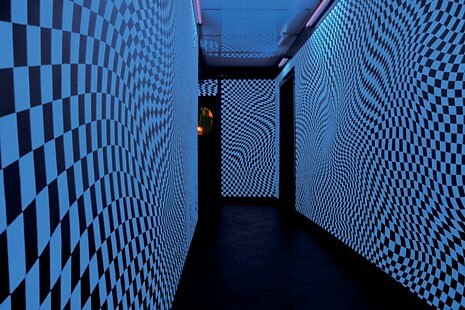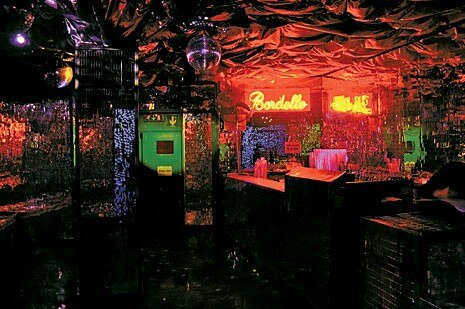Up till a decade ago, people sought
transgression under cover of darkness and
frequented discos in their pursuit of ecstasy
amid psychedelic lights and sounds. Today,
nightlife and the places chosen for its
enjoyment are undergoing a radical change.
“The real revolution in Italy started when the
law prohibiting smoking in public
establishments was passed in January 2005.
Before then, lighting technology had exploited
the passive smoke barrier to create
atmosphere, whereas now it’s as if the light had
been switched on to reveal everything that was
previously shrouded in semi-darkness:
armchairs, lamps, the colour of walls and
tables.” Beppe Riboli – one of the best-known
designers of Italian nightlife – explains that
what was can no longer be. He describes how
design has hit nightclubs and transformed
them into immense, perfect showcases that
have opened up an extensive field of
investigation.
“The architect’s main job is to innovate and to
create imaginative places by manipulating
space and studying the logistics of an interior,
but also by choosing the right kind of glasses
for serving drinks, in a blend of creativity and
technology. Will I succeed in creating
something really riveting?” This is the first
question that Riboli asks himself when starting
a project. He is convinced that discos, too, as
with the economic trend of products in general,
have to amaze if they are to stand out from the
mounting competition.
The attractive club with its vast lounges is not
the only side of nightlife. There are also other
places that aren’t particularly bothered about
material aspects and attach more importance
to getting the music and the atmosphere right.
To make discos spectacular, some concentrate
on animation, as at the Privilege in Ibiza: a huge
hangar, the world’s biggest discotheque,
complete with acrobats, jugglers and similarly
eye-catching forms of entertainment.
But then there are the simpler types of club,
with no podium dancers, no table reservations.
The important thing is for customers to enjoy
themselves, even simply in a “garage”, where
people are not interested in fashion but do care
about the originality of their clothes. Not
everyone in this nocturnal world thinks that the
“architecture factor” is what makes clubs
distinctive. Some, like Sergio Tavelli of Milan’s
Plastic club, think it is a blunt weapon. “We’ve
been open 27 years, and our customers come
here for the good music; we keep a constant
eye on the avant-garde scene, so we know how
to pick up on the trends and to be the first to
interpret them.” This little disco, located on
the Milan orbital, certainly offers no designer
furniture: the few objects to be found there
were picked up at street markets, and Sergio
himself upholstered the armchairs by hand.
And yet, when you go in you feel the magic in
the simplicity of its walls, an impalpable
sensation that reflects the family atmosphere
created by its owners.
“Architects are too concerned with things like
the effect of light on a column, which is fine
but of no interest to us,” continues Tavelli. “All
discos offer the same ascetic atmospheres.”
Riboli agrees: “This widespread uniformity
and prevailing style are symptomatic of poor
creativity and badly researched design.”
The necessity for renewal is a reality, and the
failure of design to get discos right has led
many to make their own alternative
arrangements. It all starts with an exchange
of emails. Drinks are bought at the supermarket
and the rendezvous is fixed in a piazza for
example. This Bottelon phenomenon, which
started in Spain but is now also popular in Italy,
has led thousands to dance to the rhythm of
djembes and guitars against a rediscovered
background of streets and public spaces.
What does seem vital to nocturnal ecstasy
is that bodies come into contact with other
bodies.
Disco Mystic
An excursion into nightlife to survey the role of design in clubs.

View Article details
- 16 January 2008
